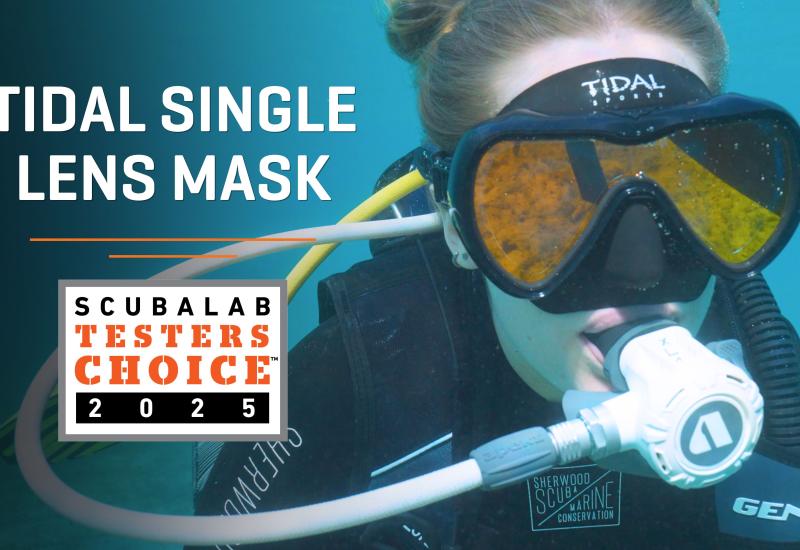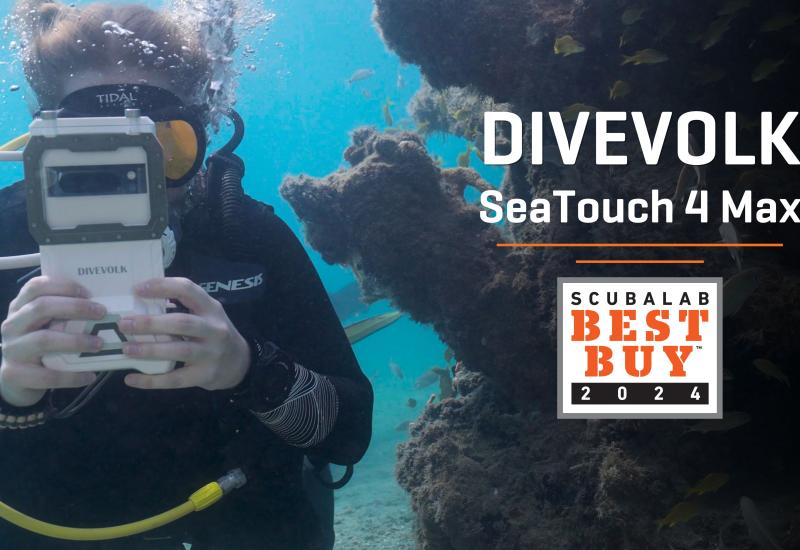Behind the Scenes of the ScubaLab 2017 Dive Computer Review

John Michael BullockManaging Editor Melissa Smith write down notes while evaluating dive computers at Blue Grotto.
In May, ScubaLab was busy testing dive computers at Blue Grotto Dive Resort in Williston, Florida for the 2017 dive computer review. Take a look behind-the-scenes of our subjective tests and see how our team of test divers put the latest computers through their paces.

John Michael BullockBlue Grotto Dive Resort in Williston, Florida was the base of operations for the 2017 ScubaLab dive computer test.
Scuba divers were asked to evaluate the computers on a number of criteria and used underwater slates to record their scores in each area from 5 (excellent) to 1 (poor) and also provided written comments about their experience using each dive computer.
The test categories were:
• Ease of reading screen at surface (including in sun)
• Ease of reading screen underwater (including performance of light)
• Usefulness and ease of accessing alternate dive-screen data, including compass
• Ease of hearing audible warnings
• Ease of accessing and usefulness of surface interval data
• Ease of navigating menu and settings
• Overall ergonomics (ease of wearing and handling; size; controls and buttons)
Note: Scores for readability at surface and underwater take into account screen size limitations, according to the size of the computer

John Michael BullockScubaLab Director Roger Roy compares the displays of two console computers during the 2017 dive computer test.

John Michael BullockAssistant underwater photographer AJ Semenick lends a hand hauling scuba tanks to the dive deck.
WHAT WE LIKED
Menu prompts Some of the computers in the test, such as the Oceanic ProPlus X, have such clear onscreen prompts that it’s simple to navigate even long, complex menus.
Wireless connections Dive computer download cables are a pain to keep track of — and unpleasantly expensive to replace if you lose them. So we’re glad to see the expanding use of simple, reliable wireless connections such as Bluetooth that let us download dive logs to our laptop or even smart phone without having to plug in.
Clean screens New technologies are making possible screen displays that are sharper and crisper than ever. And new character designs and graphic devices are making it easier to read even small watch-style screens at a glance

John Michael BullockScuba divers at Blue Grotto in Williston, Florida.
Q. I need a new dive computer, but I’m not sure what I want. Any tips?
A. Try reading the instructions before you buy. Virtually all operator manuals are now available online, and many have clear, well-written instructions and even color screenshots showing setup and dive screens. It’s a good way to see if a computer has the features you need and a display and operating logic you’re comfortable with. — Roger Roy, ScubaLab Director

John Michael BullockScubaLab test diver David Woods evaluates the ease of reading a dive computer's display underwater.

John Michael BullockTest diver John Conley returns to the surface after evaluating the safety stop timer of his dive computer.
RUNAWAY DECO
No-deco times might tick down predictably, minute by minute, but not so your deco time. Once you’re in deco, your deco obligation can grow quickly, but some computers have features to prevent you from being surprised at your deco times.
The Shearwater Perdix AI allows you to select an optional feature (in OC Tec or CC mode) called “@+5,” which displays what your deco obligation would be if you stayed at your current depth another five minutes. The Mares Quad has a similar feature called “ASC+5,” which runs in the background and appears once in deco and on an alternate, non-deco dive screen. It triggers an alarm that displays “R-away” to alert you to a rapidly increasing deco obligation. You can set the alarm (which can also be turned off ) to trigger when the difference between current deco time and five minutes later reaches 10, 15 or 20 minutes.

John Michael BullockAssistant Editor Robby Myers dons a drysuit in a preparation for a full day of test diving at Blue Grotto.

John Michael BullockAssistant Editor Robby Myers evaluates the console computers during the 2017 computer test.
Q. Why do some computers say “no deco” and some “no stop”?
A. You can add to those “NDL,” “safe minutes” and “NDC” — showing just some of the variety in how the computers here display the same data. Designers choose the terms they do for several reasons, from screen space to their own views on the best way to present the data. The important thing is that you know what your computer is saying, no matter what terms it’s using to say it. — Roger Roy, ScubaLab Director

John Michael BullockOur ScubaLab test divers (from left): David Woods, Robby Myers, Melissa Smith, Roger Roy and Tom Wuest. Not pictured: John Conley.










